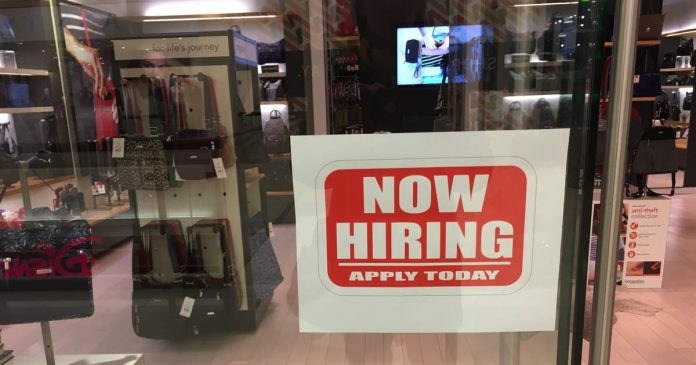The April jobs report is here, and as expected, it’s a “doozy.” 20.5 million Americans lost their jobs last month during the peak of the COVID-19 outbreak.
But instead of sending stocks lower, the market continues to rise. Analysts remain confused, wondering if bulls have lost their minds or if it’s a sign that the worst is finally behind us – two outcomes that are not necessarily mutually exclusive.
The data itself from the Labor Bureau is stunning, there’s no denying it. Unemployment hit 14.7% in April.
Now, the discussion is all about whether the economic recovery will be fast enough to keep stocks afloat. Despite today’s surge, the Dow (+1.50%) and S&P (+1.20%) remain below their April highs. The tech-heavy Nasdaq Composite (+1.00%), meanwhile, managed to punch through to a new high for the year.
So far, big tech’s been the post-crash “winner” by a mile. Five companies – Facebook, Amazon, Apple, Alphabet (Google), and Microsoft – control roughly 20% of the S&P 500’s total market cap.
As their share prices climb, so too does the general market. That bodes well for other “blue chips” moving forward.
“Large companies have fallen much less than smaller companies,” said Peter Orszag, Financial Advisory CEO at Lazard.
“It is likely that as a result of this crisis the strong will get stronger […] and so the stock market is reflecting that in its relative valuation.”
For bears, that’s a terrifying prospect; the idea that the market leaders will drag small caps upwards, kicking and screaming.
That might not make any sense from a fundamental standpoint, but with a COVID-19 treatment in the field (Gilead’s remdesivir) and a potential vaccine on the way (Moderna’s mRNA-1273), it doesn’t need to.
An economic recovery, supported by a medical solution, could be all it takes for stocks to see new all-time highs before 2020 is done.
“The US consumer has proven to be the economic engine over the last decade,” said Shannon Saccocia, chief investment officer at Boston Private Wealth.
“Investors who are buying heavily into this market believe that behavioral changes are unlikely to create a dislocation in demand longer than a couple of quarters.”
Shifting matters even more bullish is the Fed’s record-setting stimulus via the $2 trillion CARES Act and unlimited asset purchases.
“While the collapse in economic activity is historic, so too is the global policy response to cushion the impact and support a recovery as containment measures are relaxed,” JPMorgan’s Marko Kolanovic wrote in a note to clients.
“We estimate the impact of Fed easing in both rates and credit more than compensate for the temporary hit to corporate earnings when valuing the US market via discounted earnings.”
And though corporate earnings might be saved, the stimulus could still spell doom for the U.S. dollar if inflation gets out of control. The Fed’s racing against time, here. If the state-by-state re-openings don’t get consumers out of the house and spending, currency printing will put our entire monetary system at risk.
That’s not to say we’re guaranteed to see sky-high inflation as a result, but the odds of it occurring are rising. Similarly, it also doesn’t mean that a major rally continuation is about to happen.
Until the S&P and Dow can clear the April highs, they’re more likely to see a “next leg down” rather than up before the true “recovery rally” takes hold.
It’s a confusing situation for investors and analysts alike. Don’t feel bad if you’re equally perplexed on what to do.
And even though investors sidestepped the April jobs report this morning, it shouldn’t necessarily be seen as a purely bullish signal.
If the rest of the market can’t catch up with tech, a correction will follow.
How bad it gets (and when to buy back in) would be the next topic of discussion should a downturn arrive.
All while America attempts to re-open for business, fingers crossed that COVID-19 doesn’t rear its ugly head once more.








